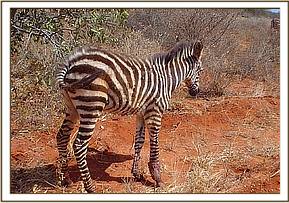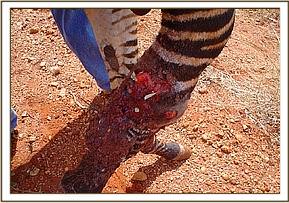The activities this month were few, only three
The activities this month were few, only three. The Unit had the opportunity to visit Tsavo West and private ranches to distribute its contacts and also establish the situation as far as veterinary emergencies are concerned. We also occasionally patrolled Tsavo East National park in an effort to look for any injured animals. A buffalo that was seen carrying a snare on its neck in Taita Hills sanctuary was not found despite looking for it on the 29th and 30th June. The game scouts are on the lookout and will call any time they see it again.
The first case was of a zebra mare with a wire snare on its neck at Kilalinda Lodge on 11th June. The lodge is a few kilometres from the Eastern boundary of Tsavo East. The snare was loose and had not inflicted any injury. Immobilisation was achieved by Etorphine (M99®) combined with xylazine (Chanazine®) administered by the Dan-inject dart rifle. Time to recumbency was about six minutes. The animal was given some long acting oxytetracycline (Oxykel® LA). It was revived with Diprenorphine (M5050®) and Atipamezole (Antisedan®) to antagonise the two immobilisation drugs respectively.
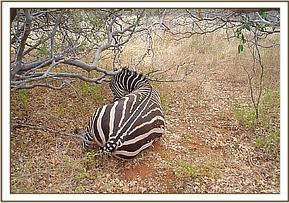

The unit was also involved in the movement of 10 orphans from the Nairobi (6) and Voi (4) orphanages to the new establishment at Ithumba. The movements were carried out on the 18th and 21st June. Those from Nairobi were young and were loaded physically without chemical restraint. The ones from Voi were accustomed to feeding in the transport truck for two days before loading. However, only 2 adapted to these and were loaded without any chemical restraint and transported together.

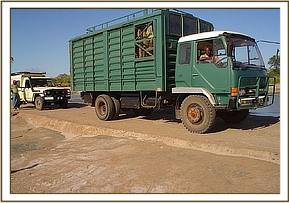
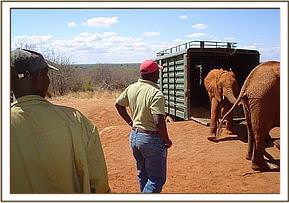

The last case was of a zebra foal on 24th June at Manyani area whose right fore leg was severely damaged around the coffin, pastern and fetlock joints by fire possibly sustained at a charcoal kiln. Charcoal burning is common in the area. Treatment of joint injuries is normally intensive and prolonged. In most cases, such injuries lead to severe infections and inflammation (arthritis) and the prognosis for recovery is always unfavourable. The foal was under severe pain and was unable to bear weight on this leg. The injury was severe and chances of recovery were nil. Thus, to stop further suffering it was humanely put down with 20% Pentobarbitone (Euthatal®) intravenously after immobilisation with Etorphine (M99®) combined with Xylazine (Chanazine®).
